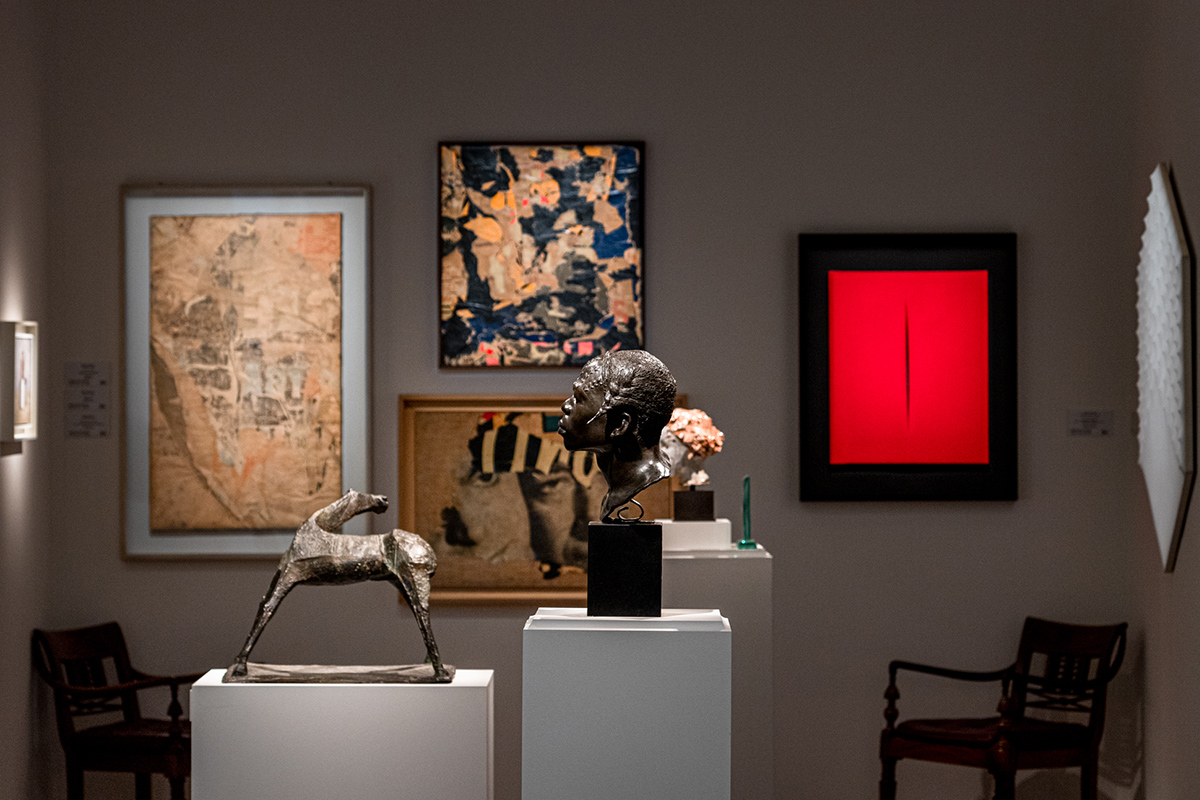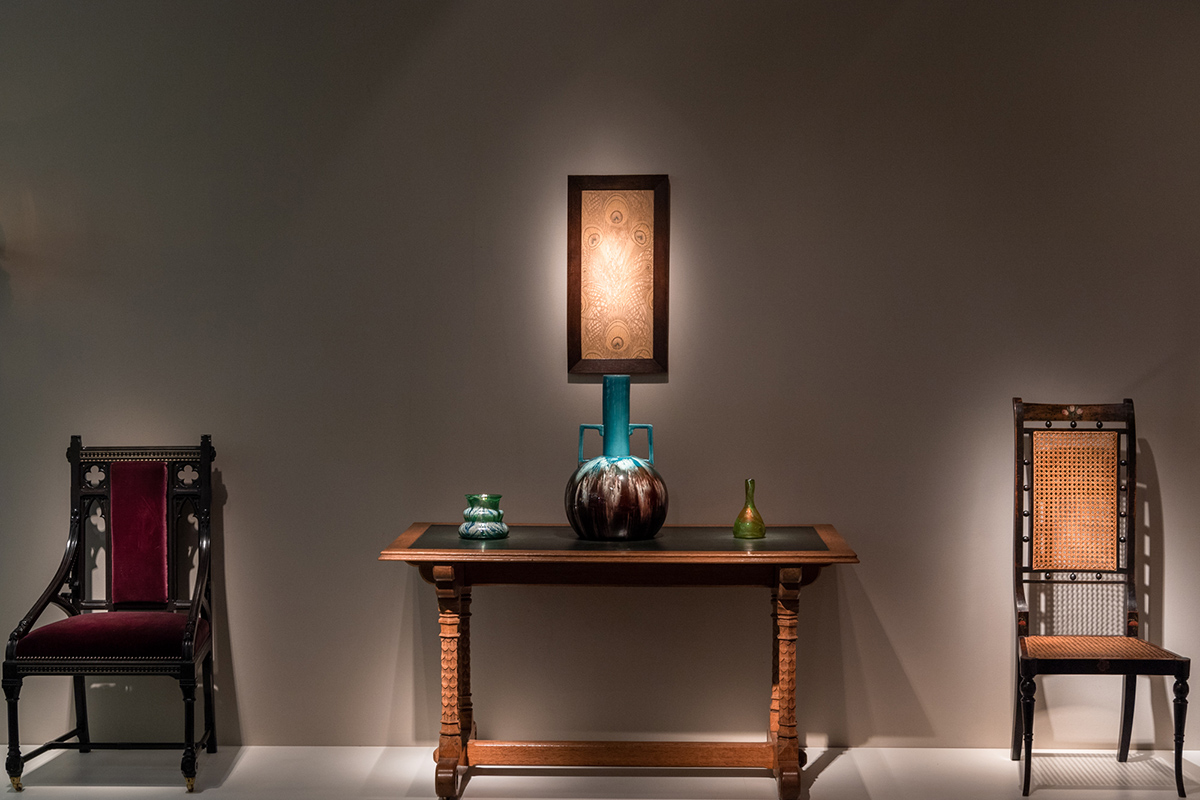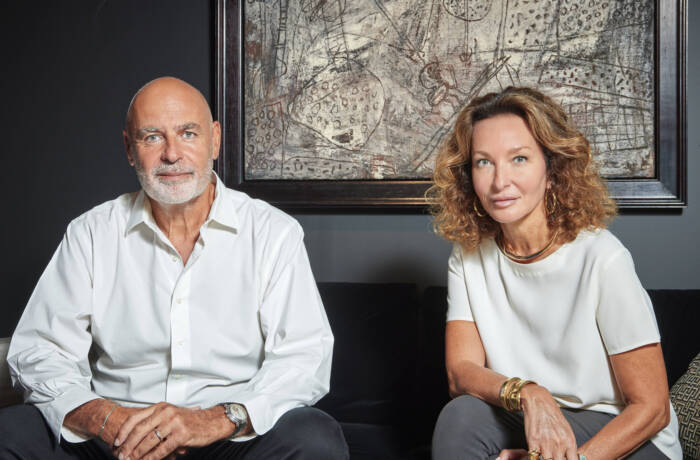
Robilant + Voena at Masterpiece London 2019, photography Ben Fisher, Courtesy Masterpiece London
In his final column for LUX, art collector, advisor and chairman of Masterpiece London Philip Hewat-Jaboor shares advice on collecting art, and pairing contemporary and antique objects
My belief is that we all have the urge to be surrounded by beautiful objects, and this has only been intensified by our time spent in lockdown. When we are living with things we love, we have a sense of place and stability that enhances our lives and brings so much pleasure and enjoyment.
I was introduced to the wonderful world of collecting, and specifically cross-collecting, by my grandfather who carefully mixed Chinese ceramics with British sporting pictures and English furniture in his home. These three specialist collections came together to form balanced and unified interiors that have continued to inspire me.
Follow LUX on Instagram: luxthemagazine
Collecting and displaying historic artworks and objects alongside contemporary pieces is a trend that can be traced back to ancient Roman times. This is evident, for example, in the great collections put together by the Medici family, which can still be seen in the interiors of the Palazzo Pitti in Florence and the acquisitions by King George IV in the early 19th century also epitomise the richness to be found from cross-collecting (part of his extraordinary collection is currently on display at the Brighton Pavilion, re-installed in the original sumptuous interiors). This is also the way I like to collect personally, with carefully curated combinations, enriching the whole.

Philip Hewat-Jaboor at home in Jersey, 2019, photo Danny Evans, Courtesy Philip Hewat-Jaboor
How do you start collecting?
The art world can sometimes appear baffling and opaque, but don’t let this put you off. Visit museums, art galleries, auction houses and art fairs. The most important thing is to look, and continue to look. Discover what excites you and why. Is it the history of the piece? Are you drawn to a particular material, to contemporary pieces or to more traditional fields?
Put aside the current fashion of separating contemporary art from the traditional – this is a modern distinction, which I personally believe limits our imagination. That said, the contemporary art world provides the opportunity to engage with the artist or designer, and to understand and learn from them first hand.
Build a relationship with a trusted dealer or advisor. They are knowledgeable and passionate, eager to share and there is no better way of learning. Read as much as you can, and most importantly buy with your heart.
What makes a good work of art?
Why is one work more desirable than another? I ask myself about the overall integrity of design (if a three dimensional work), the quality of the material and how well it is used, and the craftsmanship. To me a measure of great design is demonstrated be being able to scale an object up or down in size without loss of its integrity. The condition of a piece plays an important role, and it’s important to look for original surfaces on furniture and sculpture, concealed damage to ceramics, and ensure that works are not over cleaned. Look for signs of conservation rather than restoration. However, less than perfect condition should not be a deterrent if the work is particularly rare or unusual. Provenance (who owned the work previously) is vital both from the point of view of reinforcing authenticity but it can also tell a story and add to the piece’s desirability. In my opinion, a great work of art is both beautiful and intellectually rewarding.
Read more: Why the Swiss village of Andermatt is designed for living

Oscar Graf at Masterpiece London 2019, photography Ben Fisher, Courtesy Masterpiece London
How much is it worth?
It can sometimes appear difficult to establish value. There are numerous ways to search for comparable pieces online, however, this does not give you a complete picture; every work is different (they are not like shares), you cannot judge condition nor the circumstances of a previous sale, which can give rise to both inflated and low prices. One of the positive outcomes in the growth of online selling platforms is an increased transparency about prices.
Do your homework, but ultimately, it comes back to trust and buying from reputable sources. Many of the works I treasure the most are those which were a financial stretch to acquire, but I have found myself repaid a thousandfold in pleasure.
How do you display artwork in your home?
Thoughtful display plays a crucial role is showing works to their best advantage and creating a dialogue between them. As a favourite of mine, the early 19th century cross-collector William Beckford said, “Everything depends on the way objects are placed, and where. Horrors in one place discount beauties in another.”
I have been taking advantage of my time at home this year to really look closely at objects in my collection. I also regularly move works around. For example, I placed a contemporary alabaster bowl by Stephen Cox next to a recently acquired Egyptian unguent vessel that was made some two and half thousand years earlier, but the pieces are identical in material and the pairing has given rise to a wonderful conversation between two diverse works. Beautiful objects resonate with other works of beauty. Too many people are afraid of scale; works that you might feel to be too large often hold a room. There is no need to be timid. Decoration should be conceived to enhance how we sees works of art and not be a diversion.
Buy what you love and look for beauty, take good advice, do your own research and don’t worry too much about the cost which is soon forgotten!
Philip Hewat-Jaboor is Masterpiece London’s Chairman of the Fair. Read his previous column here
Masterpiece Online, sponsored by Royal Bank of Canada, is taking place from 24-27 June 2021. For more information visit: masterpiecefair.com








